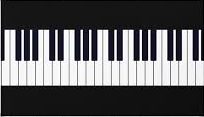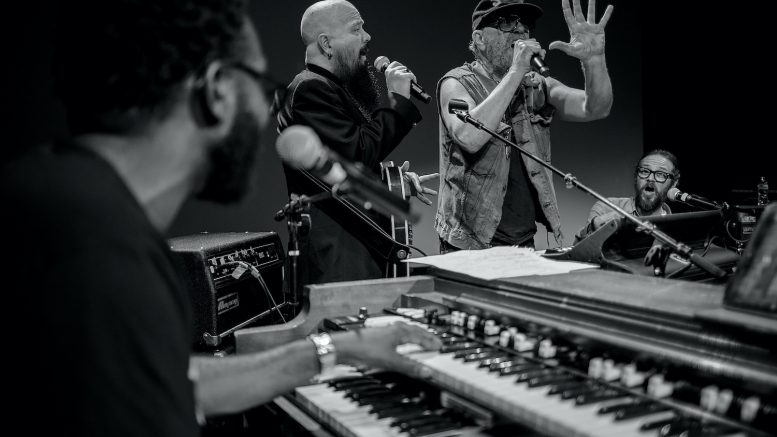By Nick Krewen
Special to the Star
For his new, brilliant gospel-flavoured soul album Heavy Sun, seven-time Grammy winner Daniel Lanois had to convince a Shepherd to leave his flock.
Describing himself as a “now-and-again” guitarist for the Hallelujah Train band at the Shreveport, Louisiana-based Zion Baptist Church run by Brady Blade Sr., the Hull, Québec-born artist and award-winning producer of blockbuster albums by Peter Gabriel, U2 and Robbie Robertson says he was sitting in when he discovered the church’s choir director, organist and singer Johnny Shepherd.
“We call him our ‘hymnologist,’” Lanois, 69, said recently from the converted west-end Buddhist Temple studio he purchased 10 years ago – and where Heavy Sun was partially recorded.
“I thought he was a rare talent – a man who had never sung outside a church but was used to delivering live music to a congregation.”

Lanois said that something about Shepherd’s sound reminded him of the soul music he had heard and witnessed while based in Hamilton during his adolescence and days operating Grant Avenue Studio and rekindled his desire to create a four-part harmony group.
“There was always something magical about those deliveries, “ Lanois recalled. “When I met Johnny, I thought, ‘somebody sent me this man so we’re going to make this record that we’ve been dreaming about.’”
There was only one problem: Shepherd needed some convincing to leave the perch of his Shreveport church in order to join Lanois and his Heavy Sun Orchestra bandmates guitarist and singer Rocco DeLuca and bassist and singer Jim Wilson in Los Angeles for the first recording sessions.
“Johnny said, ‘I hate to leave my church,’ and I told him, ‘Johnny, you don’t have to leave the church. Church is not necessarily about walls and gilded ceilings. The church is really the message,’” Lanois recalls.
“And he said, ‘okay, as long as every song has a message, I’ll leave my home, I’ll leave the church.’
“So we coined the term ‘A Church With No Walls.’”
The phrase makes its appearance in “Tumbling Stone,” a call-and-response Heavy Sun song featuring exquisite four-part harmony, anchored by soulful church organ and inspired by both Shepherd and Lanois journeys to look beyond their comfort zones.
“It’s about Johnny leaving his home to become a troubadour and how I left my home to wander on a pilgrimage,” Lanois explains. “And to have the courage to leave the comfort of home and the comfort of the walls of church and take the message on the road.
“I felt that there was a freedom that came our way through that song – or a reminder to us, at least, that we can, as we travel, we can let the Word be heard. If we could touch hearts and bring joy to people as we move along, that’s a good thing done, so that’s the basis of “Tumbling Stone” that as comrades, we could travel together – the four traveling minstrels.”
Reached in Los Angeles, Johnny Shepherd, 35, says he first met Lanois five years ago in New York City and that Lanois had constantly pursued him for three years before he agreed to join his project.
“His persistence is what actually drew me to consider it,” say Shepherd, who worked a day job as an aid for the Caddo Parish education system and spent his nights as Music Minister of Zion Baptist Church.
“You might get an invitation and you may never hear from back from them, but Dan didn’t do that – he kept calling and communicating with me. So I took that under consideration and thought he was genuine with what he was saying. He said he kept seeing something within me from the first time we met in NYC.”
At one point, Shepherd was worried he might have irked Lanois and his future bandmate Rocco DeLuca because the two would stare at him intently, and then talk to each other out of Shepherd’s earshot.
“I have to laugh about this because Dan eventually told me, ‘We were thinking about throwing you in the back of. the van and kidnapping you,’” Shepherd chuckles.
As you’ve probably gathered by now, this is quite a departure for Daniel Lanois, with the 11-song album featuring Shepherd singing most of the leads, healthy blasts of church organ permeating the opener “Dance On” and underpinning “Please Don’t Try;” a funky Neville Brother feel on “Every Nation;” ethereal electronics on “Power,” and gorgeous harmonies throughout to offer an idea of the rich palate of sonics that Heavy Sun offers.
There’s also an insightful collection of uplifting philosophical and spiritual – rather than religious – lyrics co-written by Lanois, Shepherd and DeLuca that are grounded in optimism.
“It came out of what the pastor, Brady Blade, told me,” says Lanois. “He said, ‘Happiness – that’s easy enough to come by. Maybe you get a new car, a new house, a new stereo, and you find happiness, but joy is the ultimate.’
“And we want to find joy in our harmony singing. Because what happens is that when you sing harmonies, you stop thinking about yourself, because you have to think about a blend and the other people in the room.
“So, it’s an automatic cancellation of ego and it becomes all about blending and consideration to others. In modern times, maybe it’s good for us to think about a balance out there – not only with nature but other human beings – and maybe a selflessness shaping part of the equation.”
Heavy Sun is also the first in a series of recordings Lanois is releasing under “The Maker” umbrella – one that fits into a pattern he’s been noticing lately about his work.
“Looking at my past chapters of work, things have happened in four-year blocks, going back to even the Hamilton days and working with (Brian) Eno on the Ambient Series,” he notes.
“Switching over to New Orleans, I did my first record Bob Dylan’s Oh Mercy, Neville Brothers Yellow Moon, and then later Willie Nelson, Emmylou Harris, and Sling Blade, I wasn’t completely aware of my pattern back then. I am now.
“So, I’m anticipating that the next block of creativity as being a block of all-related projects somehow or other. ‘The Maker’ series is making public what I anticipate what I’m going to include under this banner for the next three or four years.”
Whether that will include a second album by his Heavy Sun Orchestra configuration may be too early to say, but Lanois is open to the suggestion.
“Well, that all depends on whether we can congregate with the guys,” he says. “At the moment we can’t tour, so we’ll have to let the Gods decide that one.
“I love singing with these people and I think we did something quite unique. So, if there’s a second one to be had, then let it be, but at the moment I’ve moved on to piano composition and I’m going to knock out a piano record, which will probably be the next one after Heavy Sun.”
As for Johnny Shepherd, he’s looking forward to the pandemic being over enough that the quartet can tour – and he’s also willing to work on a follow-up to Heavy Sun if everything works out.
“I told Dan that I’m in it for the long haul. He’s stuck with me now.”
An influential tastemaker and studio wiz, Lanois, a Canadian Music Hall Of Fame member, an eight-time Juno Award winner who has won five Producer of the Year Junos, says he’s thrilled about the portability that newer technology has afforded him.
“We can make records anywhere now,” he observes. “When I was a kid, you had to go to the recording studio to make a record, but that’s changed: if you find yourself in a really cool club, you can make a record there. So, the lines are more blurred than ever, and I welcome that.
“We can also quite quickly send a file to someone in a faraway place and have a contribution made. That didn’t happen back in the day. So the ground rules have really changed radically, making collaboration more possible.
“I can send something to Brian Eno across the pond and he can make a contribution or vice versa, as I did with the recent re-lease of Apollo where we included a few new titles – and we did those through satellites.“
Speaking of that pioneering ambient music era in the early ‘80s where Lanois was engineering and exploring with British generative composer Eno at Hamilton’s Grant Avenue Studio, did he realize that the atmospheric results of that partnership would become a prominent part of his future sound?
Because when you listen to either Lanois solo works like Acadie or For The Beauty Of Wynona or even the new Heavy Sun, or his productions ranging from Emmylou Harris’ Wrecking Ball or Willie Nelson’s Teatro, the impressions of that period are nestled within the recordings.
“The lessons learned – I didn’t think they were lessons at the time – but looking back, I realized that that was really an amazing time of concentration,” he responds.
“As skilled as I was – I was working on a lot of different records – and maybe not as focused as I could have been – and the coming of Eno into my life allowed me to see his focus and his directions. It awoke something in me.”
Producer and engineer Mark Howard, a Lanois protégé who worked with him for 23 years and on such projects as Bob Dylan’s Time Out of Mind and Neil Young’s Le Noise, says there’s a reason he’s in such high demand as producer and collaborator.
“Dan’s an excellent musician, and he’s got a good barometer for what’s good and what’s bad,” says Howard, whose upcoming ECW Press coffee table book Recording Icons and Architecture, available in September, will feature some photos of Lanois sessions.
“He’s a spotter – U2’s Bono will sing three very different choruses and Dan will say, ‘Okay, the second one is the chorus.’
“So, he’s really good at noticing and spotting genius in people that they don’t see in themselves. That’s one of the definite highlights of his talent.”

